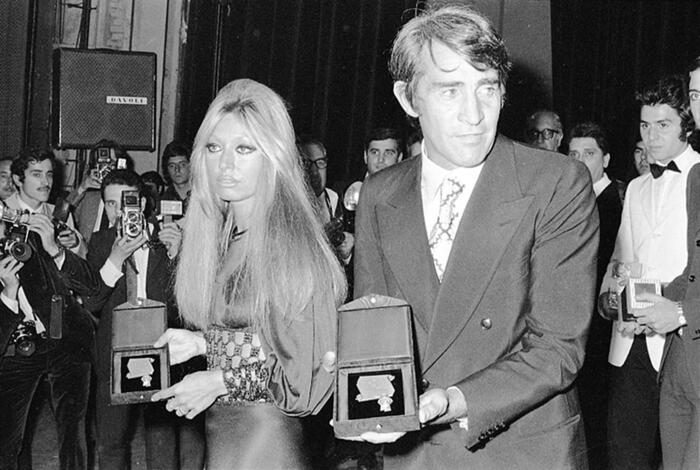Frank Sinatra died on May 14, 1998 at Cedars-Sinai Hospital in Los Angeles.
He was 82 years old and his passing, despite the fact that his glory days were long past, shocked the entire world.
The Voice faded and that metaphor (and all its variants) turned out to be irresistible to hundreds of journalists from all over the world.
"Frank Sinatra dies, the voice of the American dream," Javier Valenzuela headlined the chronicle that he signed the next day for EL PAÍS from Washington.
That event caught the journalist and writer Pete Hamill, a friend of Sinatra, at the Miami airport, where he was surprised to see how the passengers crowded into the waiting room in front of the televisions on which CNN was broadcasting a special about the artist. .
Hamill then recalled how, for years, Sinatra had tried to convince him, during long nights in bars in Las Vegas, New York or Monte Carlo (those evenings full of cigarettes and Jack Daniel's with which we all associate the Italian-American artist), to help him write his autobiography.
"It never happened, for reasons that don't matter now," Hamill confessed later.
More information
Twelve celebrities and their hilarious opinions about Spain
After Sinatra's death, articles, specials, reports and chronicles about his figure followed one another.
Hamill followed them intently, but all that cover felt a little stale and empty to him.
For him, in all those texts a fundamental element was missing.
The singer had spent his last years missing, in and out of hospitals, and his last performances hadn't been worth remembering either.
So why did Sinatra continue to matter to so many people?
Frank Sinatra pours a glass of Jack Daniel's under the gaze of Dean Martin and Sammy David at the famous Cocoanut Grove nightclub (Los Angeles), in July 1961.Getty
It was at that moment that he decided that, even without his help, he would finally write the story of the Hoboken singer.
His particular and totally subjective version of it.
He had a lot of material, they had met on many occasions, sometimes without witnesses.
And Sinatra had told him many things.
Hamill, however, never intended to publish the classic "definitive biography" of Sinatra, with hundreds of pages of photos or dozens of interviews.
There were already several of those and there would be many more in the future.
Rather, assuming that the reader had a more or less clear idea of who Sinatra was, he wanted to condense in a few strokes all the faces, the brightest and the darkest, of the artist.
A realistic psychological portrait, but more in the style of Goya than Velázquez.
This is how
Why Sinatra Matters was born,
which has just been published for the first time in our country by the publishing house Libros del Kultrum, and which reviews the influence that descending from a family of Italian immigrants had on the artist's career, having experienced firsthand racism, prohibition, World War II and, of course, its most public facet: his musical and film career, lovers and scandals.
A story that for Hamill is condensed into three fundamental themes that marked his life: music, politics and love.
Music
Why does Sinatra matter?
The answer to this question is not exactly simple or unique, but it was always clear to Hamill that the most important thing about him was his music.
In an interview on
The Charlie Rose Show
in 1998, when the book was originally published in his country, he explained: “There are a whole series of reasons to say that Frank Sinatra matters, but I think the most important of all is the music.
His music is unique and original and until he appeared there had been no music like that.
Many of us have forgotten about it a bit, because over the years it has been degraded by a whole legion of cheap imitators, but it was the music of urban America, created by the last generation of European immigrants to come to our country.
It quickly became the sound in much of the United States as well, and then in many other parts of the world.
He wasn't like Hank Williams and he wasn't like Bob Dylan, but he became at least as important."
Frank Sinatra, in a studio in the fifties.Greg Milner.
'Perfecting sound forever'
For Hamill, Sinatra managed to inhabit his songs in the same way that great actors inhabit their characters.
He became, being an only child and a staunch defender of his privacy, the poet of loneliness.
An epidemic that, already in his time, was beginning to haunt millions of people around the world.
Just like Marlon Brandon will always be Kowalski, his character in
A Streetcar Named Desire
(1951), Sinatra will always be that guy who's alone in a bar at two in the morning, counting the quarters in his pocket and wondering if he will be able to find a taxi at that hour, with the rain that is falling.
That character is what Sinatra, Hamill argues, brought to that music.
Politics
Although Sinatra was born in the United States in 1915, his parents were Italian and, at that time, racism towards immigrants from that country was in full swing.
According to Hamill's account in the book, little Sinatra realized it when he was five or six years old and suffered insults and racism in his own flesh.
The fact of keeping his last name became an act of resistance against the prevailing xenophobia.
When he started his career, singer Harry James suggested that he change his name to something less threatening to the
establishment.
"Why don't you call yourself Frank Satin?", he asked.
The proposal was angrily rejected by Sinatra.
"Can you imagine if he would have changed it for me?" He told Hamill on one occasion, between angry and amused.
"Right now I would be singing on a cruise."
Precisely, one of the most unknown facets of Sinatra, especially on this side of the Atlantic, was his political commitment, derived in part from his immigrant ancestry.
It may come as a surprise, for example, that in his youth he sympathized and even donated to organizations like the National Association for the Advancement of Colored People.
“It wasn't just black people hanging from those fucking ropes,” Sinatra once told Hamill when he was already in his 60s.
Some would never forgive him sympathies like that.
Hamill places the origin, for example, of the rumors of his relations with the mafia precisely there.
Sinatra always denied that the criminal organization helped his career, although he couldn't deny that he knew many of its members, especially during his early days.
"Of course he knew a lot of mobsters," he acknowledged to Hamill.
“They worked in the clubs where I sang during the thirties and forties.
They were former alcohol dealers doing legally what they used to do illegally.
I greeted them and that's it”.
Love
Finally, one cannot talk about Frank Sinatra without mentioning his relationship with women.
Married since he was 24 years old to Nancy Barbato, with whom he had his three children, Hamill has no doubt that the great love of his life was Ava Gardner.
He had a terrible relationship with the actress, full of scandals and fights, separations and reconciliations, and also coincided with one of her lowest periods of popularity.
“They were like two scorpions in a bottle.
Neither could escape except by eating the other," Hamill writes.
Frank Sinatra and Ava Gardner.
The most stormy relationship in the singer's life.
Although they separated in 1957, Sinatra, who for much of the 1950s was little more than "Ava Gardner's husband," never forgot her.
Thanks in large part to the performer, he was restored to his role as a big star in the middle of the decade because Gardner agreed to make a free movie at the peak of his career,
From Here to Eternity
(1953), on the condition that Sinatra would play the role of Angelo Maggio, a job that led him to win the Oscar and the Golden Globe for best supporting actor.
After those awards came the contract with Capitol Records and some of his best records:
In the Wee Small Hours
(1955),
Songs for Swingin' Lovers!
(1956),
Come Fly with Me
(1958),
Only the Lonely
(1958),
No One Cares
(1959) or
Nice 'n' Easy
(1960).
In the interview with Charlie Rose, Hamill recalls an anecdote that confirms Sinatra's love for Ava. “The only time I met Ava Gardner was in New York in the seventies.
I was accompanying a friend who knew her.
By then she was an imposing ruin, like the Colosseum in Rome.
She drank a lot and, although she badmouthed Sinatra, she did it in a strangely affectionate way.
In fact, she lived in Sinatra's apartment at the Waldorf-Astoria and they had been divorced for more than 15 years.
So Sinatra never stopped caring about her when no one gave him a job because of her addiction to alcohol."
Like all great artists, the figure of Frank Sinatra also contained his secret and perhaps dark corners.
Contradictions, mysteries and regrets.
The biography of Peter Hamill does not aspire to reveal them all, but rather to give a close image of the singer thanks to the author's recollections, who, at the end of the introduction, recalls their conversations thus: "From time to time, a curtain would open, a he gave an instant epiphany and could see in him the insecure old man who wanted to understand what it all means, the man who said that dying was a real shit,
a pain in the ass.
I really liked that man."
You can follow ICON on
,
,
, or subscribe here to the
Newsletter
.



/cloudfront-eu-central-1.images.arcpublishing.com/prisa/SBPSZANFINCITELUZCPU7HSROM.jpg)




/cloudfront-eu-central-1.images.arcpublishing.com/prisa/4U7HLSIMWA6CLQVYFOXLZTUFYU.jpg)
